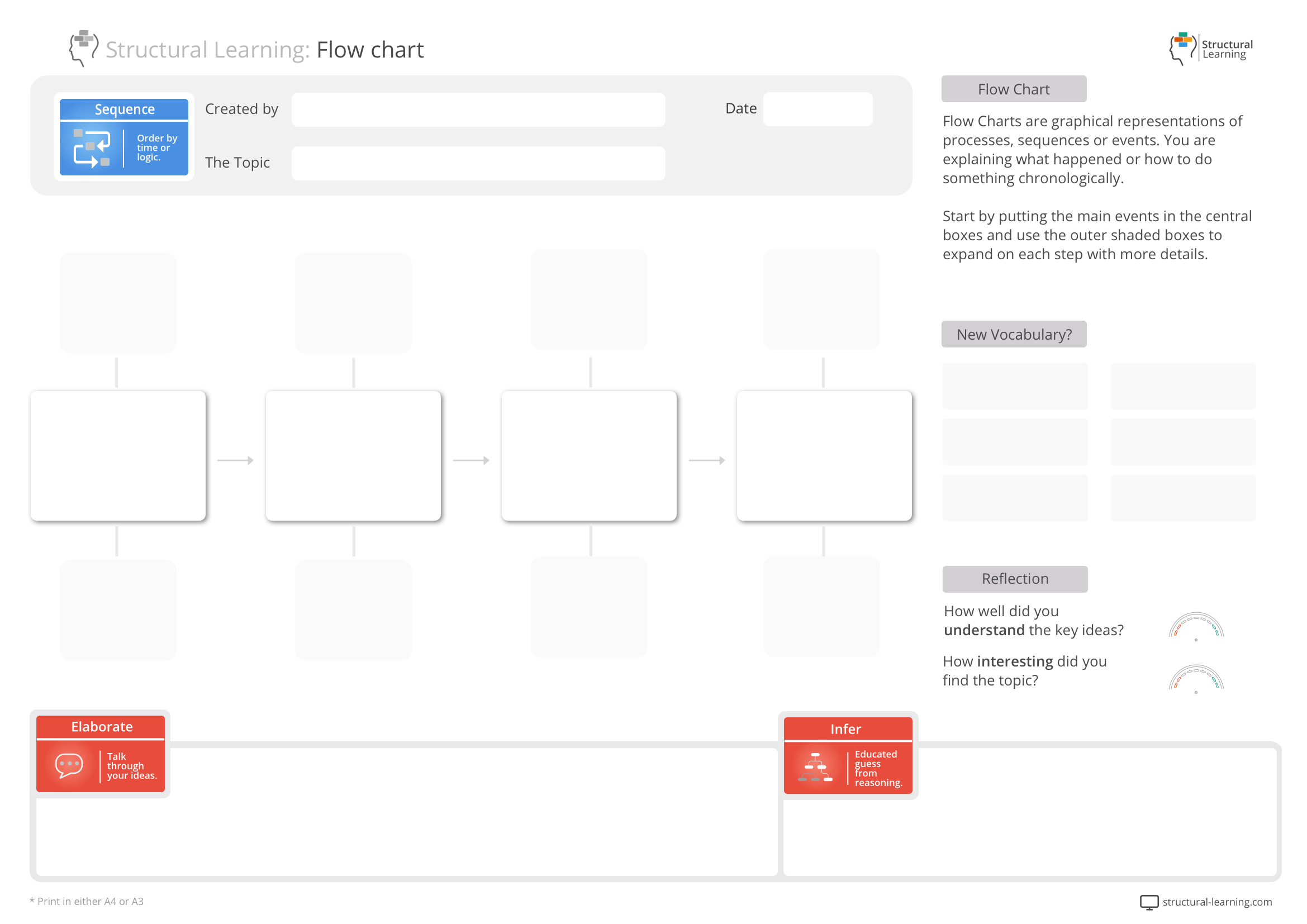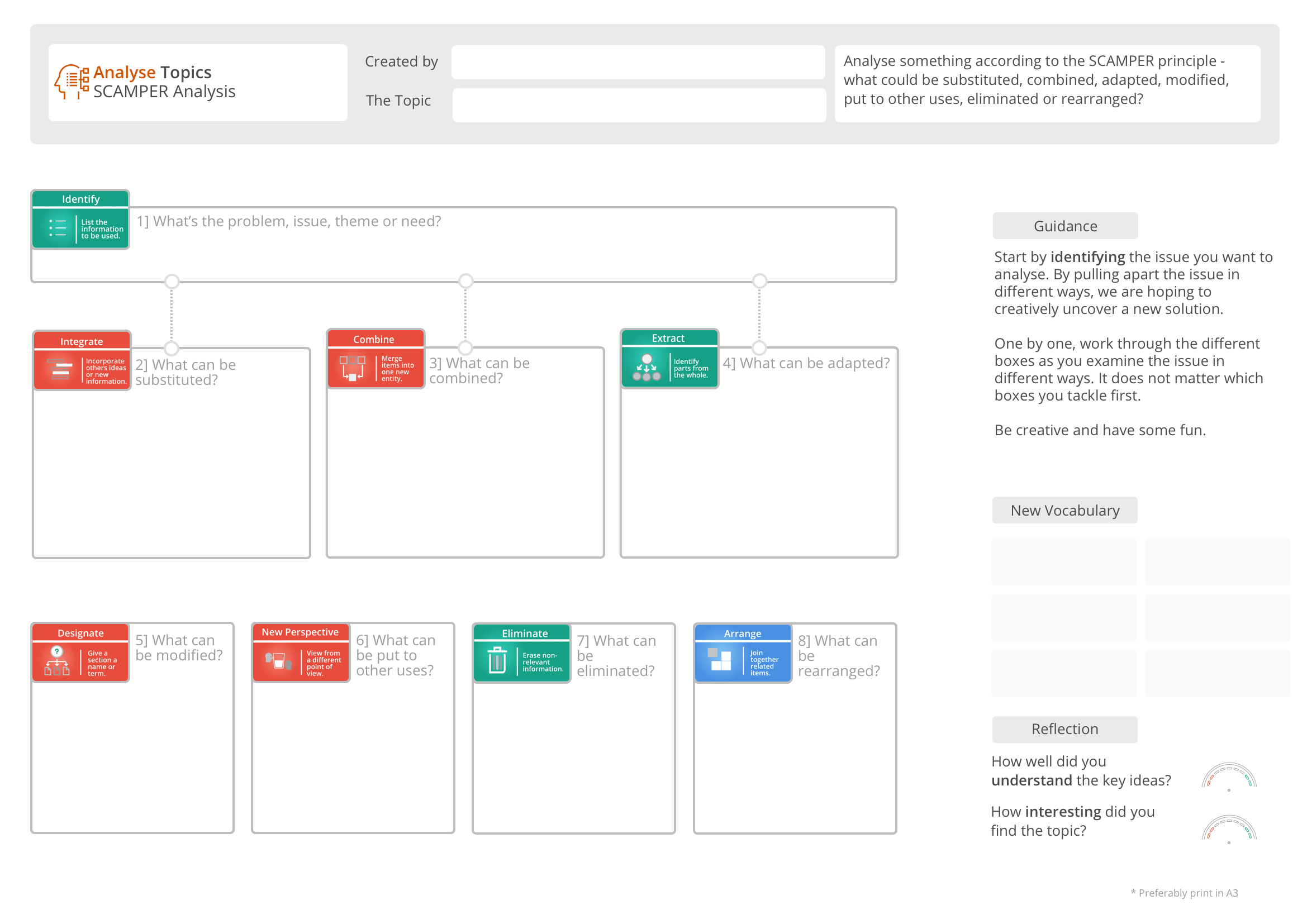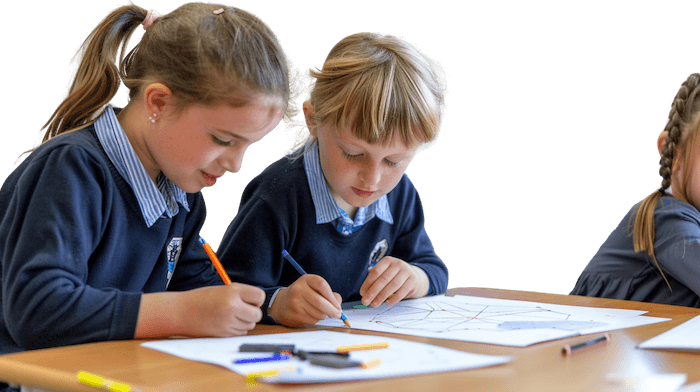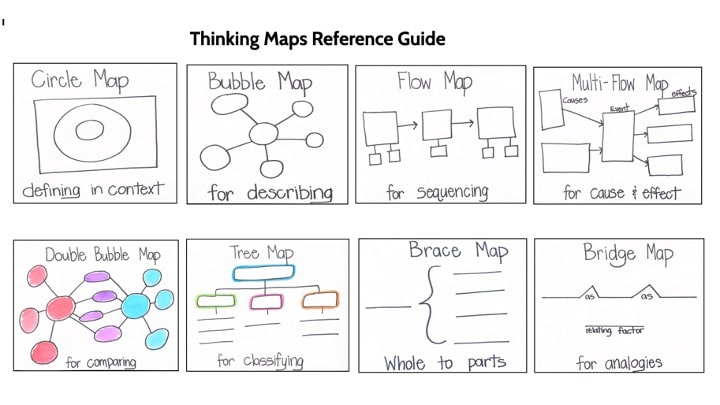Thinking Maps for Deeper Learning
Learn how thinking maps and visual tools help students develop critical thinking skills, organise complex ideas, and improve learning across all subjects.


Learn how thinking maps and visual tools help students develop critical thinking skills, organise complex ideas, and improve learning across all subjects.
Thinking maps are visual tools that help students organise their thoughts and ideas. These graphic organisers guide students through complex thinking tasks by making abstract concepts more concrete. When students can see their ideas on paper, they find it easier to make connections and solve problems.
Students use these visual tools across all subjects and grade levels. The maps support different types of thinking: creative, critical, and analytical. Teachers find them useful because they help all students access higher-order thinking skills, regardless of their starting ability.
The beauty of thinking maps lies in their simplicity. They turn complex ideas into manageable visual patterns. This makes learning more accessible for students who struggle with traditional text-based approaches.
These tools also work well for developing higher-order thinking skills. Students learn to analyse, evaluate, and create through structured visual activities. The spatial organisation helps them engage in clear reasoning as they work through their ideas.
Thinking maps provide a framework for creative thinking across topics. They help students make connections between concepts, ideas, values and knowledge. These tools offer opportunities for exploration, collaboration and finding original solutions to complex questions.
Teachers can use thinking maps to teach advanced science concepts such as scientific reasoning. Students learn to identify patterns and relationships between data points. The visual format helps them understand the scientific process and support their hypotheses with evidence.
These maps also work well for teaching abstract concepts like ethics, philosophy and morality. Students can see why certain decisions are made and learn to think critically about situations. The visual format helps them look beyond surface observations and spot patterns in underlying principles.
You can explore a variety of graphic organisers by opening a free account on the Structural Learning website, where you can access and view a range of visual tools to support your teaching.
Thinking maps work as a common visual language for learning across entire school communities. When used systematically, they promote the cognitive thinking processes needed for understanding abstract ideas. Teachers can use these consistent, clear patterns to help all students access higher-order thinking tools.
These visual tools help students become aware of their own assumptions and biases. They notice patterns and connections that may not be obvious otherwise. Students can identify gaps in their knowledge and areas that need improvement.
The best part is there's no single right answer. Just as you might draw different aspects of yourself in a self-portrait, thinking maps allow students to explore different facets of complex topics. This flexibility makes them suitable for all learners.
When students use thinking maps, they learn to tackle abstract concepts more effectively. The visual format turns complex ideas into concrete representations. This helps students build the background knowledge they need for deeper learning.
If you want to learn more about different thinking processes and how to use them in daily classroom practice, the resources below will help your students turn abstract concepts into concrete ideas.
Thinking maps are organised into eight different types. Each type connects a specific cognitive skill with a visual pattern.



Our school members have successfully implemented the language of thinking over the last 12 months. Our growing collection of common thinking models helps classroom teachers support all types of thinking processes.
We believe many students succeed based on how well they organise their thoughts. Developing concrete ideas requires focus, and thinking maps help students concentrate on important ideas and connections. Abstract concepts can sometimes block the development of background knowledge. Using visual representations of knowledge helps develop the understanding needed for deeper learning.
The thinking map acts as a common language for learning. This means students don't need to rely heavily on speaking skills. Our collection of visual tools provides classrooms with resources to tackle the most complex ideas.
Taking the thinking process out of a child's head and into cooperative learning helps teachers see inside their students' minds. When working in pairs, we bring social learning theory into action. The concept map now acts as a prompt for discussion. Central ideas can be talked through and expanded upon through rich classroom conversations.

Choosing an appropriate graphic organiser has become easier. Within our library of visual tools, teachers need to decide what type of knowledge they are trying to build. The search function is built around key questions, for example, 'what happened?'.
A 'what happened' question corresponds to building a visual representation of chronological events. If a question starts with 'why did...?', this relates to causal analysis: what was the effect and the overall cause. Using a consistent language about thinking maps helps children make decisions about their learning.
Over time, pupils can begin to choose the right tool for the job. This helps school communities build understanding systematically and independently. Creating graphic organisers can take time, and our pre-built visual tools can increase teacher capacity in the classroom by letting them focus on instruction.

If this article has got you thinking about using visual tools and higher-order thinking skills across your school, please get in touch. We run courses that help teachers use thinking maps in different situations. This professional development can be expanded with guided action research projects.
These have become popular for teachers as they allow school communities to assess the impact of their interventions. Your curriculum content can come to life with straightforward visual tools. We have various scales and observation frameworks to help your colleagues measure how well these strategies work.
Please get in touch if you are interested in running a professional learning enquiry project.
Thinking maps provide excellent tools to show relationships between individual ideas, display hierarchy, and see the 'big picture' at a glance. These aspects also make thinking maps ideal for presenting information to others, creating knowledge pools and solving complex problems.

Thinking Maps can promote various levels of thinking. They have also become helpful in supporting learning development, particularly in primary schools. Here's how they can be integrated across different subject areas to enhance learning:
Thinking Maps are more than just visual aids. They are tools for mental processing that build higher-level thinking skills. These skills are important for combining knowledge and creating solutions.

Key Points:
Thinking Maps are not limited to one subject but can be smoothly integrated into curriculum design. They build a wide range of thinking skills and engage students in active learning that prepares them for an increasingly complex world. Research further shows the effectiveness of Thinking Maps in improving learning development.

Many books cover this subject, but we feel the one that does this topic the most justice is the original text by David Hyerle. In his book 'Visual tools for constructing knowledge', David Hyerle outlines a visual language that has stood the test of time.
He provides compelling reasons for their use and explains the different types of graphics and how they can improve understanding. My version of the book dates back to 1996 and looks a little dated now. However, the content and principles remain as sharp as ever.
Think maps are particularly helpful when you're trying to understand a complex issue or process. For example, when your class works on an essay plan, you may use a thinking map to help organise thoughts and plan steps.
Here are five key studies on how well graphic organisers and thinking maps help learning:
Thinking maps are visual tools that help students organise their thoughts and ideas. These graphic organisers guide students through complex thinking tasks by making abstract concepts more concrete. When students can see their ideas on paper, they find it easier to make connections and solve problems.
Students use these visual tools across all subjects and grade levels. The maps support different types of thinking: creative, critical, and analytical. Teachers find them useful because they help all students access higher-order thinking skills, regardless of their starting ability.
The beauty of thinking maps lies in their simplicity. They turn complex ideas into manageable visual patterns. This makes learning more accessible for students who struggle with traditional text-based approaches.
These tools also work well for developing higher-order thinking skills. Students learn to analyse, evaluate, and create through structured visual activities. The spatial organisation helps them engage in clear reasoning as they work through their ideas.
Thinking maps provide a framework for creative thinking across topics. They help students make connections between concepts, ideas, values and knowledge. These tools offer opportunities for exploration, collaboration and finding original solutions to complex questions.
Teachers can use thinking maps to teach advanced science concepts such as scientific reasoning. Students learn to identify patterns and relationships between data points. The visual format helps them understand the scientific process and support their hypotheses with evidence.
These maps also work well for teaching abstract concepts like ethics, philosophy and morality. Students can see why certain decisions are made and learn to think critically about situations. The visual format helps them look beyond surface observations and spot patterns in underlying principles.
You can explore a variety of graphic organisers by opening a free account on the Structural Learning website, where you can access and view a range of visual tools to support your teaching.
Thinking maps work as a common visual language for learning across entire school communities. When used systematically, they promote the cognitive thinking processes needed for understanding abstract ideas. Teachers can use these consistent, clear patterns to help all students access higher-order thinking tools.
These visual tools help students become aware of their own assumptions and biases. They notice patterns and connections that may not be obvious otherwise. Students can identify gaps in their knowledge and areas that need improvement.
The best part is there's no single right answer. Just as you might draw different aspects of yourself in a self-portrait, thinking maps allow students to explore different facets of complex topics. This flexibility makes them suitable for all learners.
When students use thinking maps, they learn to tackle abstract concepts more effectively. The visual format turns complex ideas into concrete representations. This helps students build the background knowledge they need for deeper learning.
If you want to learn more about different thinking processes and how to use them in daily classroom practice, the resources below will help your students turn abstract concepts into concrete ideas.
Thinking maps are organised into eight different types. Each type connects a specific cognitive skill with a visual pattern.



Our school members have successfully implemented the language of thinking over the last 12 months. Our growing collection of common thinking models helps classroom teachers support all types of thinking processes.
We believe many students succeed based on how well they organise their thoughts. Developing concrete ideas requires focus, and thinking maps help students concentrate on important ideas and connections. Abstract concepts can sometimes block the development of background knowledge. Using visual representations of knowledge helps develop the understanding needed for deeper learning.
The thinking map acts as a common language for learning. This means students don't need to rely heavily on speaking skills. Our collection of visual tools provides classrooms with resources to tackle the most complex ideas.
Taking the thinking process out of a child's head and into cooperative learning helps teachers see inside their students' minds. When working in pairs, we bring social learning theory into action. The concept map now acts as a prompt for discussion. Central ideas can be talked through and expanded upon through rich classroom conversations.

Choosing an appropriate graphic organiser has become easier. Within our library of visual tools, teachers need to decide what type of knowledge they are trying to build. The search function is built around key questions, for example, 'what happened?'.
A 'what happened' question corresponds to building a visual representation of chronological events. If a question starts with 'why did...?', this relates to causal analysis: what was the effect and the overall cause. Using a consistent language about thinking maps helps children make decisions about their learning.
Over time, pupils can begin to choose the right tool for the job. This helps school communities build understanding systematically and independently. Creating graphic organisers can take time, and our pre-built visual tools can increase teacher capacity in the classroom by letting them focus on instruction.

If this article has got you thinking about using visual tools and higher-order thinking skills across your school, please get in touch. We run courses that help teachers use thinking maps in different situations. This professional development can be expanded with guided action research projects.
These have become popular for teachers as they allow school communities to assess the impact of their interventions. Your curriculum content can come to life with straightforward visual tools. We have various scales and observation frameworks to help your colleagues measure how well these strategies work.
Please get in touch if you are interested in running a professional learning enquiry project.
Thinking maps provide excellent tools to show relationships between individual ideas, display hierarchy, and see the 'big picture' at a glance. These aspects also make thinking maps ideal for presenting information to others, creating knowledge pools and solving complex problems.

Thinking Maps can promote various levels of thinking. They have also become helpful in supporting learning development, particularly in primary schools. Here's how they can be integrated across different subject areas to enhance learning:
Thinking Maps are more than just visual aids. They are tools for mental processing that build higher-level thinking skills. These skills are important for combining knowledge and creating solutions.

Key Points:
Thinking Maps are not limited to one subject but can be smoothly integrated into curriculum design. They build a wide range of thinking skills and engage students in active learning that prepares them for an increasingly complex world. Research further shows the effectiveness of Thinking Maps in improving learning development.

Many books cover this subject, but we feel the one that does this topic the most justice is the original text by David Hyerle. In his book 'Visual tools for constructing knowledge', David Hyerle outlines a visual language that has stood the test of time.
He provides compelling reasons for their use and explains the different types of graphics and how they can improve understanding. My version of the book dates back to 1996 and looks a little dated now. However, the content and principles remain as sharp as ever.
Think maps are particularly helpful when you're trying to understand a complex issue or process. For example, when your class works on an essay plan, you may use a thinking map to help organise thoughts and plan steps.
Here are five key studies on how well graphic organisers and thinking maps help learning: